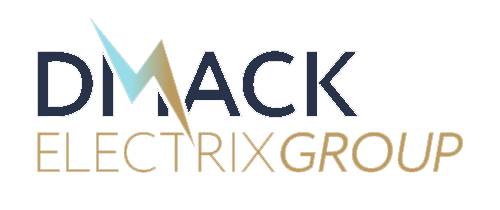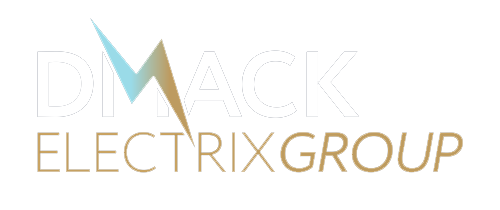What Is a Switchboard
In 2025, with homes and businesses across Australia increasingly reliant on complex electrical systems, understanding what a switchboard is—and why it’s important—is more essential than ever. Whether you’re renovating, upgrading your electrical system, or simply trying to make your home safer, the switchboard is the heart of your property’s power distribution. But what exactly is a switchboard? Why might you need an upgrade? And how does it function in today’s high-demand environments?
This detailed guide explores the modern Australian switchboard—its function, types, upgrade considerations, and compliance needs—to help homeowners and business owners make informed decisions.
What Is a Switchboard?
A switchboard is a central panel that distributes electricity from the main power source to various parts of a property. It contains safety mechanisms such as circuit breakers, fuses, and safety switches (RCDs), which protect your electrical system from overloads, short circuits, and potentially deadly shocks.
In essence, the switchboard acts like the traffic controller of your property’s electrical flow, directing power safely and efficiently. It’s vital not only for day-to-day functionality but for overall safety—especially in an age where most homes feature air conditioners, electric ovens, pool pumps, solar systems, and EV chargers.
Types of Switchboards in Australia
1. Residential Switchboards
These are common in houses, units, and townhomes across Australia. A domestic switchboard typically supports lighting, outlets, and appliances. Upgrading ensures compliance with the latest standards, especially the mandatory installation of RCD safety switches.
2. Commercial Switchboards
Commercial switchboards handle larger electrical loads and are found in offices, retail stores, restaurants, and warehouses. These often include more advanced features like surge protectors, metering panels, and separate sub-boards for departments.
3. Industrial Switchboards
Used in manufacturing facilities, factories, and other heavy-duty environments, industrial switchboards are built to handle high-capacity equipment and are often customized for operational needs, including three-phase power systems.
4. Temporary and Sub Switchboards
Smaller sub-boards or temporary switchboards are often used on construction sites or as additional panels in large properties. These must also comply with local electrical codes and safety regulations.
How Does a Switchboard Work?
Electricity enters your property through the main service line and goes directly into the main switchboard. From here, the current is divided across different circuits—lighting, power points, appliances—each managed by a breaker or fuse. Modern switchboards also include residual current devices (RCDs), which monitor leakage and shut off power instantly if a fault is detected.
Think of it as your home’s electrical “brain,” intelligently routing electricity to where it’s needed while protecting you from hazards.
When Should You Upgrade Your Switchboard?
Old or overloaded switchboards can’t keep up with the power needs of modern households or commercial setups. Here are the top signs it’s time for an electrical switchboard upgrade:
- You’re still using ceramic fuses: These are outdated and lack modern safety features.
- Your power trips regularly: This indicates overloading or faulty wiring.
- No safety switches present: Australian standards require RCDs in most cases.
- Adding high-demand appliances: Installing a hot tub, air con, or EV charger? Your current board might not cope.
- Visible signs of damage: Scorch marks, rust, or buzzing sounds are red flags.
- Renovating or expanding: More rooms or a granny flat means greater electrical demand.
If you live in Sydney, Melbourne, Adelaide, or Perth, where housing upgrades are surging, these factors are even more relevant.
Switchboard Upgrade Costs in Australia (2025)
While prices vary depending on your location, electrical setup, and switchboard size, here are ballpark estimates for 2025:

Factors that influence price include rewiring needs, main switch upgrades, AS3000 compliance, and location-based labor rates in regions like Western Sydney or Greater Melbourne.
The Risks of Old Switchboards
Outdated switchboards can present serious safety risks, including:
- Fire hazards from overheating wires or poorly insulated connections.
- Electrocution risks, especially without RCD protection.
- Incompatibility with solar systems, EV chargers, or smart meters.
- Insurance complications, as non-compliant systems may void policies.
Upgrading your switchboard is not just a compliance box—it’s a critical investment in your home’s safety and future-proofing.
Switchboard Installation & Compliance
In Australia, switchboards must meet the AS/NZS 3000 Wiring Rules and comply with your local electricity distributor’s requirements. Here’s what compliance generally requires:
- RCDs on all final sub-circuits
- Clear labelling of all breakers
- Proper earthing and bonding
- Adequate IP (Ingress Protection) rating
- Adherence to main switch location rules (often near the front entrance)
A licensed electrician should always handle switchboard upgrades and installations. At DMACK Electrix, we ensure every project is fully certified and compliant, whether it’s a residential switchboard replacement in Frankston or a commercial upgrade in Morninton.
Location-Based Switchboard Services We Offer
To enhance local search visibility, DMACK Electrix provides tailored switchboard services across Victoria:
- Switchboard upgrades Melbourne
- Domestic switchboard installations Geelong
- 3-phase commercial switchboard upgrades Frankston
- Emergency switchboard repairs Skye
- Electrical switchboard replacement Mornington Peninsula
Whether you’re in Penrith, Liverpool, or Camden, our expert team is only a call away.
FAQs About Switchboards
Is being a switchboard operator hard?
Historically, yes. Traditional switchboard operators manually connected calls, requiring concentration and precision. Today, this job is almost entirely automated.
How does a switchboard work with VLAN diagram?
In IT networks, a switchboard (more accurately, a network switch) connects devices and manages VLANs (Virtual Local Area Networks). A VLAN diagram helps visualize how traffic is segmented across network ports.
Do I need to upgrade my switchboard?
If your board is outdated, lacks safety switches, or regularly trips, then yes. An upgrade ensures safety, avoids fire risks, and meets the latest Australian standards.
Do switchboard operators still exist?
In telecommunications, the traditional role is obsolete. However, “switchboard operator” can still refer to receptionists or control panel technicians in large organisations.
How did a telephone switchboard work?
Early telephone switchboards relied on human operators plugging wires into sockets to connect calls. It was a manual and highly skilled process.
Final Thoughts: Don’t Ignore Your Switchboard
Your switchboard is more than a metal box on the wall—it’s the first line of defense against electrical hazards. A modern, compliant switchboard upgrade is essential for:
- Protecting your family or staff
- Powering modern appliances
- Meeting Australian legal standards
- Enhancing property value
If you’re unsure about the condition of your current system, book a switchboard inspection with a certified electrician today. At DMACK Electrix, we provide fast, reliable service throughout Melbourne and surrounding areas.
Want a Safer, Smarter Electrical Setup?
Contact DMACK Electrix today for a free quote on switchboard upgrades, replacements, or new installations. Let us help you power your property safely—now and into the future.
📍 Servicing: Melbourne, Based in Frankston
📞 Call: 0419 430 991
🌐 Visit: https://dmackelectrix.com.au
Would you like me to now create a meta title and meta description to go with this blog for SEO purposes?


